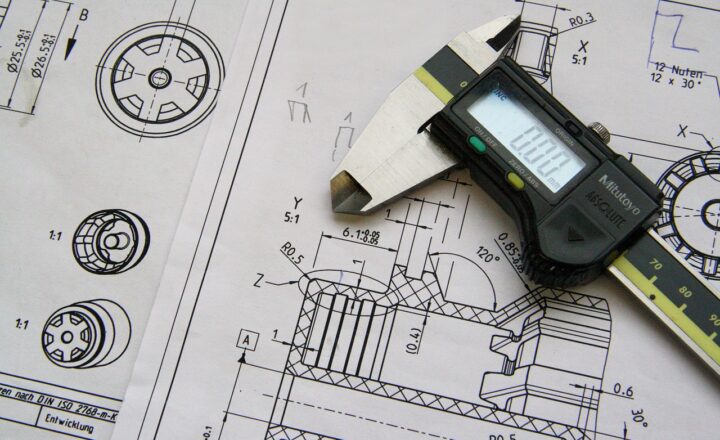The Most Unnecessary Devices of the 20th Century: Gadgets That Made No Sense
November 15, 2024

The 20th century was a fascinating time for technological innovation. This period saw the invention of numerous devices that aimed to improve our lives, but some of these gadgets turned out to be more amusing than functional. In this article, we will take a lighthearted look at the most unnecessary devices of the 20th century, exploring their intent, their flaws, and why they epitomized the bizarre side of human ingenuity.
1. The Pet Rock
In the 1970s, Gary Dahl introduced the Pet Rock, a simple rock sold in a cardboard box with air holes. Marketed as a low-maintenance pet, the Pet Rock quickly became a pop culture phenomenon. The idea was amusing; with no food, walks, or vet visits required, what’s not to love? Yet, it was simply a rock.
The fetishization of a mundane object underlined a satirical take on pet ownership, demonstrating how consumers can be easily captivated by absurdity. The Pet Rock sold over a million units, highlighting a strange belief that even the simplest of objects could be marketed successfully.
2. The Mood Ring
Mood rings, fashion accessories that purported to change color based on the wearer’s emotional state, emerged in the late 1970s. These rings contained thermochromatic elements that reacted to temperature fluctuations of the fingers. However, the claim that they could accurately reflect human emotions proved largely dubious.
With colors like blue indicating calmness and green representing jealousy, many users became frustrated as they constantly experienced color shifts that didn’t seem to relate to their feelings. The craving for emotional insight through a ring turns out to be a little too optimistic.
3. The Hula Chair
Introduced in the early 2000s, the Hula Chair claimed to exercise the body simply by sitting and swaying. In theory, the idea of getting in shape without breaking a sweat was appealing. However, the reality was starkly different: rather than producing legitimate fitness benefits, users were often left feeling silly, and many viewed it as simply a gimmicky chair.
The Hula Chair exemplifies how health fads can take absurd forms. Despite countless infomercials, the promise of effortless fitness through sit-down exercise didn’t come to fruition. It stands as a testament to the era’s public desire for quick fixes without the need for actual effort.
4. The 8-Track Tape Player
The 8-track tape player was once the hallmark of portable music in the 1960s and 1970s, promising an end to record changes during listening sessions. However, the format came with many drawbacks, including poor sound quality, frequent tape jams, and the inability to easily skip tracks. The technology became obsolete with the emergence of cassette tapes and, eventually, digital music.
Further, 8-tracks were notorious for their size and weight, providing neither true portability nor usability. This overly complicated method of transporting music contributed to the rise of more compact and reliable music formats as the decade progressed.
5. The Electric Fork
Imagine cutting your steak while an electric fork vibrates—or zaps! Believe it or not, the electric fork was designed to help people with limited mobility or muscle force. However, this device turned ordinary dining into a circus act. Imagine making a simple meal far more complicated with a vibrating utensil!
The concept lacked any notable utility and often led to more mess than convenience. The existence of the electric fork serves as a reminder that sometimes simplification is a better route than an elaborate solution for everyday tasks.
6. The Automatic Dog Walker
In a bizarre marriage of technology and pet care, the automatic dog walker was a contraption that purported to take your dog on walks while you sit comfortably at home. No leash was required; instead, the premise claimed to allow the pet to roam while being controlled from a distance.
In practicality, the idea was a disaster. Dogs are unpredictable, and there was little chance that they would obey or even be willing to walk along with such a device. This gadget quickly fell into the realm of impracticality as pet owners acknowledged the importance of hands-on interaction and care.
7. The TV Remote Control for Cats
As a playful twist on the need for pet engagement, a product emerged promising to allow cats to change TV channels with their paws. While the concept was delightfully whimsical, it turned out to be impractical as well. Cats aren’t known for their love of television, and the effort to install such a device proved more taxing than just grabbing the remote yourself.
Additionally, exposing a cat to the challenge of using a remote created more behavioral confusion than entertainment. As charming as the thought was, this device landed on the unnecessary innovation list quickly.
8. The Lava Lamp
While the lava lamp initially garnered attention as a soothing decor item, it offered very little utilitarian purpose. The decorative item melted wax in a psychedelic dance within its glass container. As captivating as they appeared, lava lamps ultimately did little beyond being conversation starters.
Many people purchased them more for aesthetic purposes than any actual function in their homes. Although beautiful, lava lamps remain a testament to how some items become iconic despite their lack of real utility.
Conclusion
In the annals of history, the 20th century gave us countless technological advancements, but it also birthed instruments of layout humor, bizarre concepts, and eccentricity. Devices like the Pet Rock and the Electric Fork reflect a society eager to solve problems that perhaps didn’t exist at all. While these gadgets may no longer be in our lives, they certainly continue to entertain us as we recognize the whimsical side of human creativity and consumer culture.
As we embrace new technology in the 21st century, may we take a moment to reflect on the past—sometimes, strange inventions serve as a reminder that behind every intelligent leap forward, there exists a realm of whimsical absurdity.








